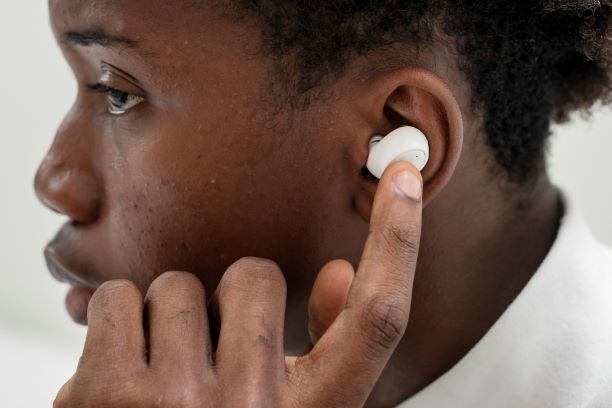The Science Behind Silicone Earplugs – Do They Work?

Silicone earplugs have gained popularity as an effective solution for noise reduction and ear protection. Whether used for sleeping, swimming, or industrial work, they offer comfort and versatility. But how do they work, and are they truly effective? Let’s explore the science behind silicone earplugs and their functionality.
How Do Silicone Earplugs Work?
Silicone earplugs function by creating a seal in the ear canal, blocking or significantly reducing the amount of external noise that enters. Unlike foam earplugs, which expand to fit the ear canal, silicone earplugs remain pliable and moldable, allowing users to shape them for a snug fit. This adaptability makes them a preferred choice for individuals seeking a comfortable and reusable option.
The principle behind noise reduction in silicone earplugs is simple: they act as a barrier to sound waves. When sound waves reach the ear, they travel through the air and vibrate the eardrum, which then transmits signals to the brain. Silicone earplugs absorb and deflect some of these sound waves, minimizing the vibrations that reach the inner ear. This leads to a significant reduction in noise levels, making them effective for various applications.
Types of Silicone Earplugs and Their Uses
1. Moldable Silicone Earplugs
These earplugs are made of soft silicone that can be shaped to fit over the outer ear canal. They are ideal for swimmers, as they prevent water from entering the ears and reduce the risk of infections like swimmer’s ear.
2. Pre-Molded Silicone Earplugs
Unlike moldable options, these are designed with a fixed shape that fits into the ear canal. They are often used for noise reduction in loud environments, such as concerts or construction sites.
3. High-Fidelity Silicone Earplugs
Musicians and concertgoers prefer these earplugs because they lower sound levels without distorting the quality of music or speech. They maintain clarity while reducing excessive noise exposure.
Benefits of Using Silicone Earplugs
1. Noise Reduction for Better Sleep
Many people use silicone earplugs to improve sleep quality by blocking out disruptive noises such as snoring, traffic, or household disturbances. Since silicone forms a secure seal, it effectively minimizes unwanted sound, promoting uninterrupted rest.
2. Protection Against Water Ingress
Swimmers and surfers use silicone earplugs to prevent water from entering the ear canal. This helps avoid infections like otitis externa, commonly known as swimmer’s ear.
3. Reusable and Long-Lasting
Unlike foam earplugs, which degrade over time, silicone earplugs are washable and reusable, making them a cost-effective and environmentally friendly option.
4. Comfortable Fit for Extended Use
Silicone earplugs do not expand in the ear canal like foam options, reducing pressure and discomfort during prolonged wear. Their soft, pliable material ensures a custom fit for different ear shapes and sizes.
5. Hearing Protection in Loud Environments
Exposure to high-decibel sounds, such as concerts, machinery, or fireworks, can lead to hearing loss. Silicone earplugs reduce the intensity of sound without completely blocking it, allowing users to hear important cues while staying protected.
Do Silicone Earplugs Have Any Drawbacks?
While silicone earplugs offer numerous advantages, they do have some limitations:
-
Less Effective at High Decibel Reduction: Foam earplugs generally provide better noise isolation compared to silicone earplugs, making them preferable in extremely loud settings like industrial workspaces.
-
Fit May Vary Among Users: The effectiveness of silicone earplugs depends on how well they seal the ear canal. An improper fit may reduce their noise-blocking capabilities.
-
Maintenance Required: Since they are reusable, silicone earplugs must be cleaned regularly to prevent bacteria buildup and ear infections.
How to Use Silicone Earplugs Correctly
To ensure optimal performance, follow these steps when using silicone earplugs:
-
Clean Hands and Ears: Wash your hands and ensure your ears are free of excess wax or moisture before inserting the earplugs.
-
Shape the Earplug: If using moldable silicone earplugs, roll them into a ball and flatten them slightly.
-
Cover the Ear Canal: Press the silicone gently over the ear canal without inserting it too deeply.
-
Ensure a Secure Fit: Check for gaps and adjust as needed to create a complete seal for effective noise or water protection.
-
Remove and Store Properly: When done, remove the earplugs slowly, clean them with mild soap and water, and store them in a dry container.
Conclusion
Silicone earplugs are a practical and effective solution for noise reduction and ear protection. Their ability to mold to the ear, provide comfort, and prevent water ingress makes them a popular choice for various users. While they may not offer the highest noise reduction levels compared to foam earplugs, their reusability and versatility make them a valuable option for everyday use. By understanding their benefits and proper usage, you can determine if silicone earplugs are the right choice for your needs.
- Questions and Answers
- Opinion
- Motivational and Inspiring Story
- Technology
- Live and Let live
- Focus
- Geopolitics
- Military-Arms/Equipment
- Seguridad
- Economy
- Beasts of Nations
- Machine Tools-The “Mother Industry”
- Art
- Causes
- Crafts
- Dance
- Drinks
- Film/Movie
- Fitness
- Food
- Juegos
- Gardening
- Health
- Home
- Literature
- Music
- Networking
- Other
- Party
- Religion
- Shopping
- Sports
- Theater
- Health and Wellness
- News
- Culture

